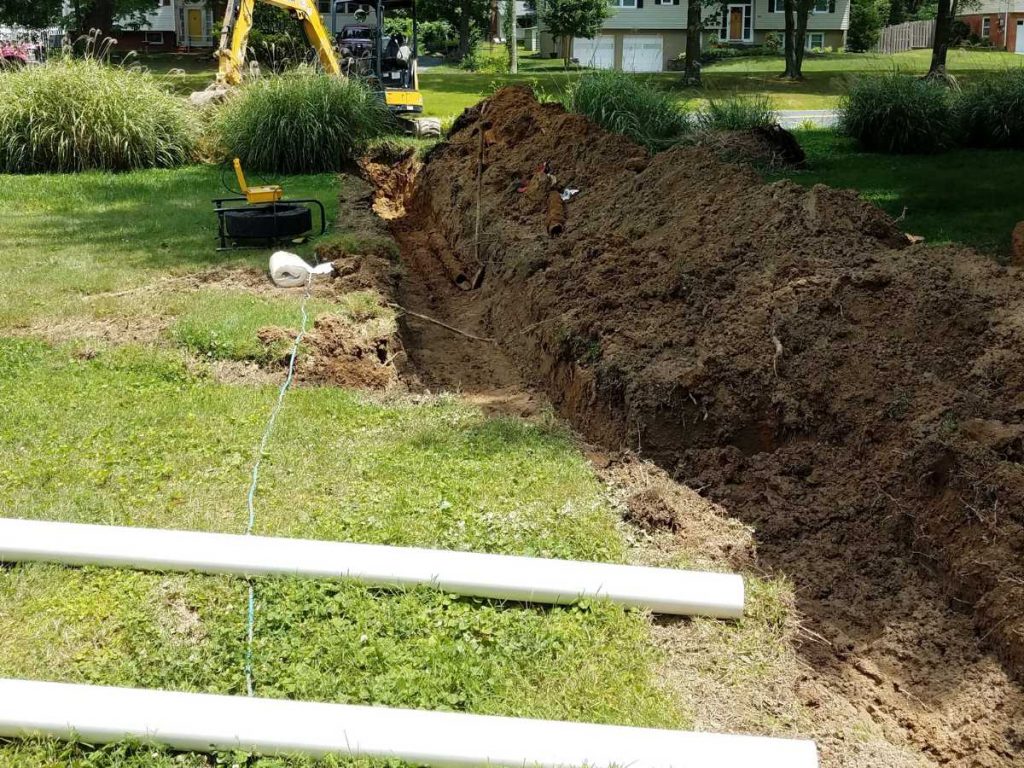Sewer lines are essential for keeping our homes and businesses functioning properly. As a sewer line maintenance technician, it is important to be aware of the signs that indicate an impending failure in order to ensure the safety of those we serve. This article will talk about some of the warning signs that can help you figure out if your sewer line is broken.
Definition
A sewer line is a type of piping system used to carry wastewater away from homes and businesses. The condition of a sewer line can drastically deteriorate over time due to factors such as clogged sewers, sewage backups, or blocked sewer lines caused by tree root intrusion or other damage. When the damage is bad enough, the sewer pipe needs to be fixed to make sure it works right and stop problems from happening in the future.
Signs of a failing sewer line include sinks or tubs that take a long time to drain, gurgling sounds coming from drains, water backing up into toilets or other fixtures when more than one is being used at the same time, bad smells coming from drains, and mold growing in places where water builds up near plumbing fixtures. If any of these signs appear, it is important to have the issue evaluated by a professional immediately to determine whether there is blockage in the pipes requiring further action, such as cleaning out debris or replacing sections with new material.
Causes Of Damage
Tree roots are especially egregious offenders when it comes to destroying sewers; their extensive network of root tendrils seek out tiny cracks and holes in underground pipe systems where they then work their way inside and eventually block off water flow entirely. As these trees grow larger and older over time, their root growth continues unabated until even large diameter pipes become completely blocked off with no hope for repair.
In addition to roots invading sewer lines, deteriorating materials such as clay piping also present major problems when left unchecked. Clay is susceptible to corrosion from acidic sewage waste which slowly erodes away at the material’s structure until one day, without warning, the entire pipeline collapses – bringing wastewater services to a halt until repaired or replaced. For these reasons alone it is paramount that regular maintenance and inspections take place on residential and commercial sewer lines alike in order to prevent catastrophic failures down the road.
Warning Signs
There are several warning signs that indicate a failing sewer line. The most common sign of this is when there is sewer water leakage in the yard or basement, which produces an unpleasant and foul odor. Additionally, blocked drains or slow-draining fixtures can be indicative of a problem with the sewer line. This could manifest as either a complete blockage or only a partial blockage, resulting in slow drainage from sinks, showers, and toilets. Furthermore, gurgling pipes may also point to an issue with the main sewer line. These sounds will typically occur in plumbing fixtures such as bathtubs and shower bases when air cannot escape through the drain due to an obstruction in the line. In any case where one experiences these warning signs, it would be wise to contact a professional for further assessment and repair services, if necessary.
Types Of Issues
A failing sewer line can present a number of issues. While it is easy to assume that the problem lies in tree roots, there are actually a few key types of damage that could be causing your plumbing woes. It’s important to identify the source of the issue so you can get it resolved quickly and properly.
The most common type of sewer line issue is root-blockage; this occurs when trees send out growing roots towards a broken pipe or crack in order to access water and nourishment. If left unchecked, these tree roots will continue to grow until they entirely block off the pipe from any further flow. Pipe-corrosion is also another potential culprit, wherein pipes weaken due to age and break down over time. This often leads to pinhole leaks which cause soil erosion around the area and ultimately lead to costly repairs. Additionally, pipe-cracks caused by shifting ground may occur as well – even if no visible signs exist on the exterior surface of the piping, cracks inside can still allow for moisture seepage and accelerated deterioration of whatever material makes up your system.
It is then essential to detect all possible causes behind why your sewer line might be failing before seeking professional help with repair work. By doing so, you’ll ensure that not only do you save yourself time and money but also guarantee that whatever necessary action is taken effectively addresses the underlying issue(s) at hand.
How To Diagnose
The key to diagnosing a failing sewer line is identifying the tell-tale signs. These can range from blockages and flooding in the home or yard, sewage backups, slow drainage, gurgling noises coming from drains, strong odors emanating from sinks or toilets, and even increased insect activity near affected areas. To detect any damage to the sewer line itself, it is important for homeowners to assess their property both inside and outside of the house. Check for any wet or mushy patches in yards that may be indicative of broken pipes beneath. It might also be necessary to check manholes located along public sewers as this could point to larger issues with the main sewer lines running through your city. Homeowners should call a qualified professional if they are unable to identify the problem themselves since further inspection will likely be needed to properly diagnose any potential sewer line issue.
It is essential that once an issue has been identified, steps are taken promptly to investigate what caused it and how best to address it before more permanent damage occurs. A technician experienced in detecting and assessing sewer damage can help uncover deeper problems like tree root infiltration or corrosion within the piping system which would require specialized solutions tailored specifically for each situation. Taking these preventative measures early on ensures that all necessary repairs are made quickly and efficiently without disrupting life at home too much longer than absolutely necessary.
Potential Solutions
It is often said that prevention is better than cure, and this phrase could not be truer when it comes to sewer line maintenance. Taking proactive measures can save you from the headache of dealing with a failing sewer line in the future. If you suspect there might be signs of damage or blockages, then an expert sewer line inspection should take place right away. This will help identify potential issues before they become serious problems.
For those who already have failing sewers, repairing or replacing them may be necessary. Most of the time, the problem can be fixed by fixing things like cracks or tree roots that have grown into the pipes. But if you need major repairs, it may be necessary to replace your sewer lines completely. In either case, professional assistance from experienced technicians specializing in sewer line repair and replacement should always be sought for advice and guidance. It is also important to undertake regular cleaning and maintenance services on your pipes to ensure any blockages do not cause further damage down the line.
Long-Term Impact
If a sewer line is not properly maintained and fails, the consequences can be long-term and detrimental. Environmental pollution caused by sewage leakage into nearby water sources can lead to serious health risks for people living in the area. If untreated sewage seeps into groundwater or surface water, it contaminates drinking water supplies, leading to sanitation problems and potential diseases such as dysentery, cholera and typhoid fever. In addition, the presence of raw sewage in public spaces creates an unpleasant environment that may impact tourism and business opportunities.
When a sewer line breaks, it needs to be fixed right away to avoid more damage and expensive repairs. To keep sewers from leaking and polluting the environment, they should be maintained regularly with high-quality materials that are made for this purpose. This will help avoid dangerous situations that could happen if systems fail and hurt both people’s health and natural resources.

Conclusion
At Estes Excavation and Drain, we understand the importance of a properly functioning sewer line, and we’re here to help if your sewer line is in need of repair or replacement. We offer a full range of sewer line services, from preliminary inspections and repairs to complete replacements. Our team of experts can provide you with expert advice on when and why replacement may be necessary, and they can also assist you with the process. We understand the importance of prompt action in avoiding further damage and ensuring the longevity of your sewer line, and we’re here to help you every step of the way.
If you’ve noticed any of the signs of a failing sewer line, don’t hesitate to contact us. Our team of experienced professionals can help you assess your situation and determine the best course of action. With our years of experience and commitment to quality work, you can rest assured that you’ll receive the best possible service when you choose Estes Excavation and Drain.
